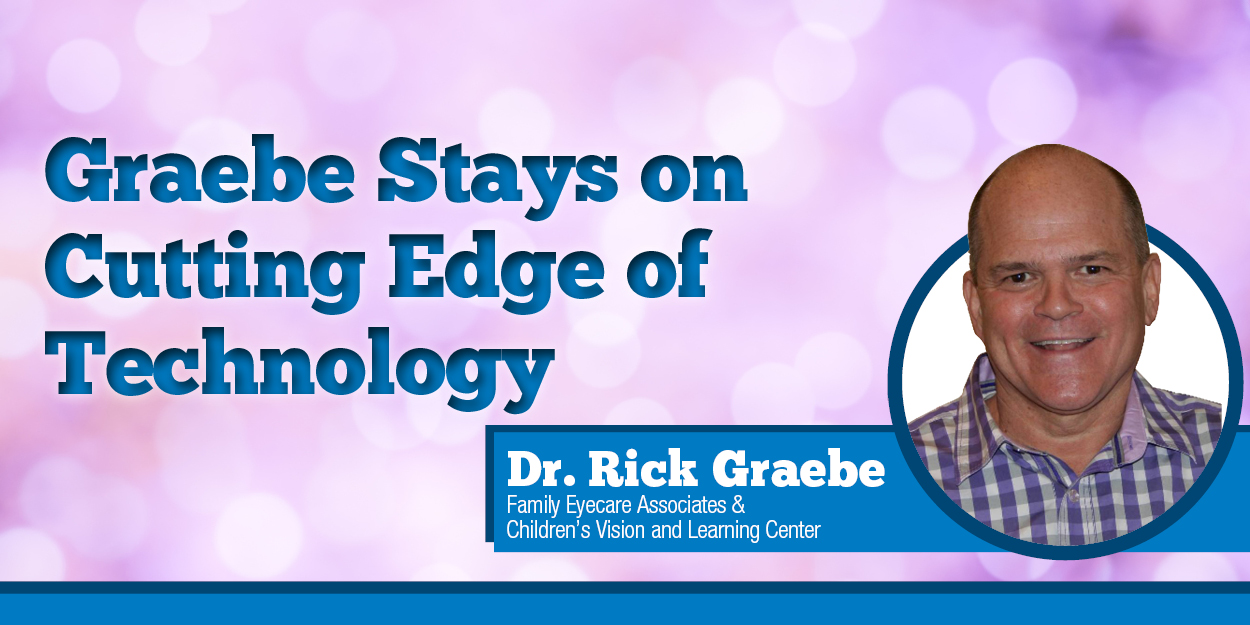BrainTap Therapy Helps Calm the Brain and Body
Even after running a successful practice for more than 30 years, Dr. Rick Graebe, a behavioral optometrist in Versailles, continues to seek new, cutting-edge methods to help his patients.
The BrainTap technology that Dr. Graebe just added to his practice is a case in point.
Using visual pathways, BrainTap helps people calm their brain and body and address issues as wide ranging as sleep and concentration problems to weight loss and fear of public speaking.
Here’s how it works: First, a simple three-minute test measures your heart rate variability to establish objective readings of your autonomic nervous system, which regulates key unconscious body functions.
Then you put on head phones and a visor that blocks your vision and undergo light frequency therapy, which delivers gentle light pulses that travel through the ear and retina to send direct signals to the brain.
These sensations activate the five primary brain waves – Delta (deep sleep); Theta (creativity); Alpha (meditative) Beta (concentration); Gamma (high level concentration) – to affect the sympathetic/parasympathetic nervous system.
The sympathetic nervous system prepares the body for intense physical activity and is often referred to as the fight-or-flight response. The parasympathetic nervous system relaxes the body and inhibits or slows many high energy functions.
BrainTap’s goal is to calm your brain and body so you emerge from the treatment feeling relaxed and focused. Dr. Graebe is a believer because it worked with him.
“I was at a trade show and I’m a hyper guy,” he said. “I run about 70% on sympathetic side of the nervous system. I took the treatment and afterward I felt relaxed and my brain felt calm. My sympathetic reading had dropped to 40%.”
Dr. Graebe is convinced that the treatment can help anyone who feels stressed out – and who doesn’t in our world where we are bombarded with screen images all day long. This could apply to people in high-stress jobs like police officers to students who feel overwhelmed with schoolwork.
Currently, Dr. Graebe plans to use the device as a “therapy within our therapy, another tool in our toolbox. Some people will have wonderful results,” he said.
“All these electronic devices we use get our brains out of sync. This is one way to get our brains back in sync.”
Of course, for Dr. Graebe, the overriding concern is simple: Will this treatment improve the lives of his patients?
“Everyone performs better when they are calm and relaxed,” he said. “My whole world comes down to one question: Are you reaching your potential? Are you happy with your performance?
“Any time you’re not reaching your potential, you can either live with it, make accommodations and compensations or you can fix it. My choice is to do therapy and fix it.”

